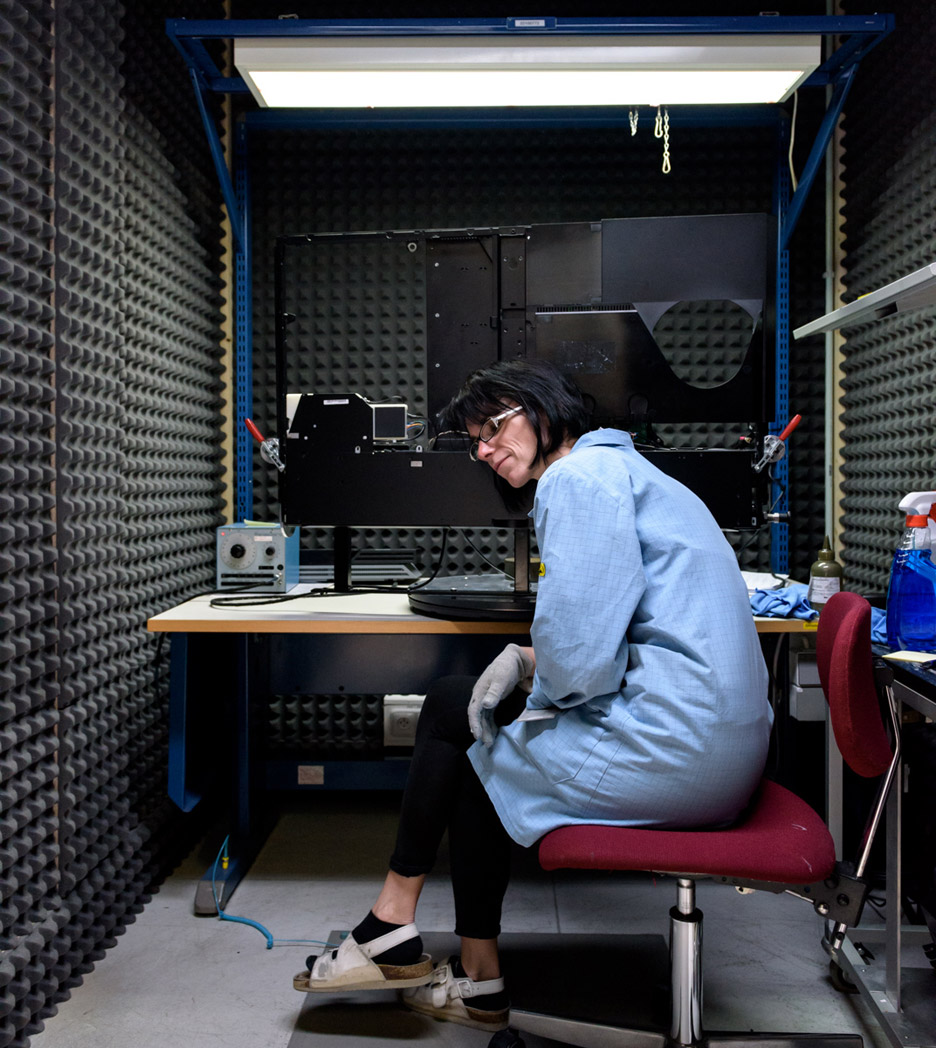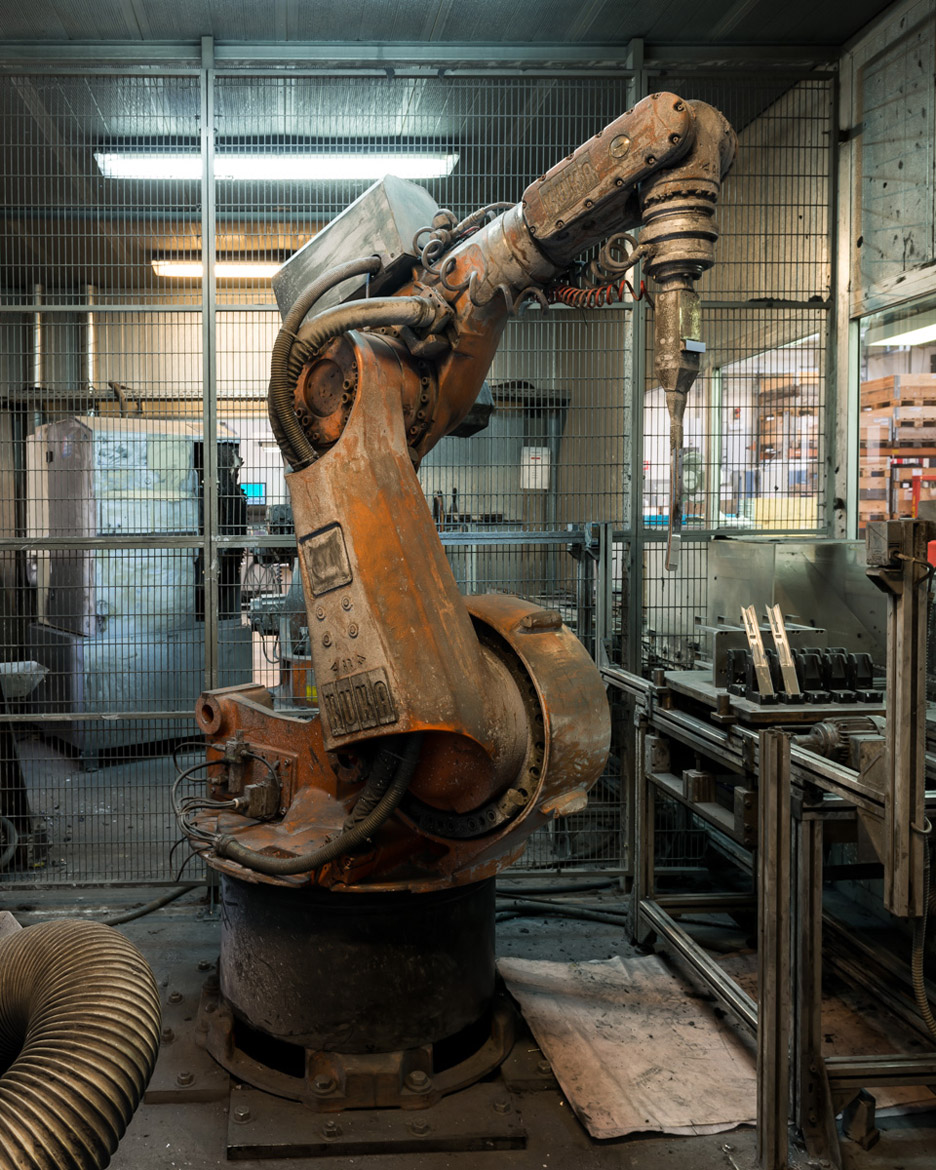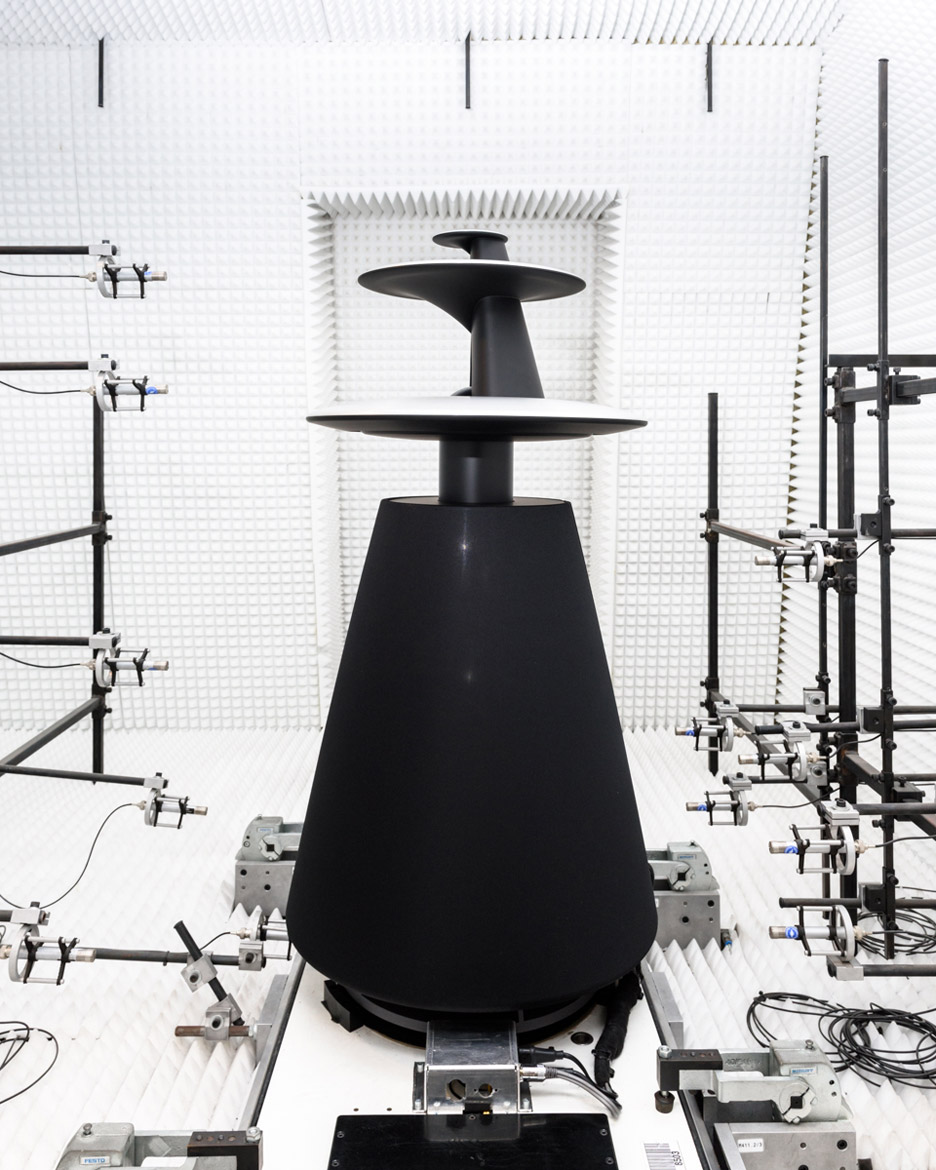Alastair Philip Wiper goes behind the scenes at Bang & Olufsen
Photo essay: British photographer Alastair Philip Wiper has delved into the history of iconic electronics brand Bang & Olufsen, whose products influenced Apple's Steve Jobs and Sony founder Akio Morita.
Founded in 1925 by Svend Olufsen and Peter Bang, the company is behind television sets, audio devices and telephones that have shaped contemporary product design, from the Beolit 39 radio (1938) to the Beogram 400 gramophone (1972).
Wiper explored the company's production, research and development facilities to uncover the story behind some of it best-known products, as well as those that never made it to market.
In this extract from his new book containing 250 new photographs, The Art of Impossible: the Bang & Olufsen Story, he describes his findings.
You have probably never heard of Struer, let alone have any idea where it is. On the west coast of Jutland, four hours' drive from Copenhagen, it is the home of Bang & Olufsen, the oldest consumer electronics company in the world.
This small company in the outback of Denmark, among the farms and fjords, should not be able to compete with the big boys; and yet for 90 years a group of proud and dedicated specialists in Struer has been giving the world a lesson about what innovative design, superior technology and quality workmanship really mean.
Elevating everyday products such as loudspeakers and telephones into objects that people develop emotional attachments to is no mean feat, and it is what has made Bang & Olufsen a brand unlike any other. The spirit of Struer has reached far and wide.

Iza Mikkelsen is Product Communications Consultant at Bang & Olufsen. Together we have scoured dusty basements for prototypes of old products, driven around Jutland in the rain, explored every corridor of the Bang & Olufsen facilities and visited the local pub, The Happy Penguin, more than a couple of times. A second-generation Bang & Olufsen employee and former competitive ballroom dancer, Iza has grown up in the company and knows everybody in Struer, greeting them as we are out and about with a cheeky smile and a chat about how their parents are doing.
During my first visit to Struer, Iza showed me the Wall of Fame in the canteen of Factory 4, an epic 30-metre-long wall displaying the portrait of every Bang & Olufsen employee who has worked for the company for a period of at least 25 years; some even made it to a half-century.
There are an awe-inspiring 1,231 portraits on that wall. Co-founder Peter Bang is the first portrait on the wall, but his partner Svend Olufsen didn't make it as he died a few months before his 25th anniversary. Rules are rules.

Seeing this wall is a humbling experience. "The spirit that was created during the first 25 years of Bang & Olufsen's life has survived until now," says Ronny Kaas, a third-generation Bang & Olufsen employee who has worked for the company since 1961, and who now serves as its history specialist.
"You could talk about it like an organism that has carried its spirit with it. Those might sound like big words, but there really is a Bang & Olufsen spirit. And if you come with an open mind, there is always the possibility of being a part of Bang & Olufsen."

The company began life in the attic of a manor house in Struer in 1925, started by two young engineers with a passion for radio and a keen eye for an opportunity: Svend Olufsen and Peter Bang. Apart from a few diversions, design at Bang & Olufsen wasn't particularly radical for the first 30 years and they made products that looked pretty much similar to everybody else's, focusing instead on technology and innovation. But in the mid-1950s something happened, and the Bang & Olufsen that we know today began to take shape.
"There was an exhibition in Copenhagen in 1954 where the furniture industry in Denmark showed that there were new times coming," says Ronny Kaas.
"The big architects like Arne Jacobsen and Hans Wegner were influencing all of the younger guys to be more daring, to reach for new shapes and new materials. Teak became very popular, colours began to be used more, and people began to change their home environments to be more cheerful and more happy."
These new trends were shown to the public through exhibitions, and old-fashioned radio cabinets were put into the exhibitions because there were no alternatives. Those cabinets received a great deal of criticism for not moving with the times, and started a discussion about how radios should fit in with modern daily life.

The most notable critic was the famous architect Poul Henningsen, who said: "It is an insult to people who value modern furniture to force them to buy these monstrosities in order to enjoy the considerable cultural asset embodied by the radio. Has this thing been designed by fishmongers or potato wholesalers with nothing better to do in their spare time?"
Heeding the criticism, a few radio manufacturers started to work with architects, Bang & Olufsen among them. After four years of research, in 1958 Bang & Olufsen started to change the way it did things and began the close collaboration with external designers that would come to define the company's way of working. Architect Ib Fabiansen was one of the first to really instigate a new direction for the brand.
In the modern era Bang & Olufsen has worked only with external designers, and that collaboration has been an integral part of the success of the brand.
"All Bang & Olufsen designs have a built-in story and idea – and when we have done our job really well, you should be able to understand what the idea is by looking at the design," says Head of Brand, Design and Marketing Marie Kristine Schmidt.
"We are not trying to create design that pleases everyone, but we make a huge effort to try and understand how our customers live at home, enabling us to make the right choices based on these insights."

A look at the products of the last 50 years will reveal the work of many talented designers, including Ib Fabiansen, Acton Bjørn & Sigvard Bernadotte, Henrik Sørig Thomsen, Lone & Gideon Lindinger- Löwy, Anders Hermansen and Steve McGugan.
But two designers stand out from that crowd, each of whom has had an enormous influence on the design of Bang & Olufsen: Jacob Jensen and David Lewis. The two young men worked for Bang & Olufsen designer Henning Moldenhawer in the early 1960s before leaving to set up their own design firms, and later returning to Bang & Olufsen. Between them they designed many of the products that have made the company famous, Jacob from the 1960s to the 1990s on the audio side and David from the 1960s to the 2010s on the video and speaker side.
Bang & Olufsen stands for old-school quality, products that are built with pride by people who care, and that is a valuable yet hard-to-grasp concept for today's society. On the one hand, educated consumers are crying out for a slowdown, for the world to return to a state where the things you purchase are important and add value to your life; and on the other they are looking for the newest technology every single day, meaning that the world is moving more quickly and disposably than ever before.
Bang & Olufsen knows that doing things its own way has always been the key to its success, but that adaptation is also important.

I have built up a huge amount of affection for this unconventional West Jutland company: the people who work there do care. They care about creating the best products, they care about each other, and they care about the customers who are going to live with those products. Bang & Olufsen wears its heart on its sleeve with nothing to hide.